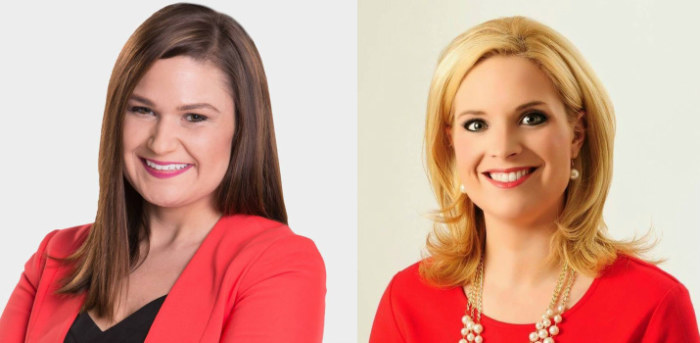Iowa’s first Congressional district will be among the country’s top-targeted U.S. House races next year. Both the Cook Political Report and Sabato’s Crystal Ball rate this district a toss-up, for good reason. Although voter registration numbers slightly favor Democrats, voters in northwest Iowa swung heavily to Donald Trump and to Republicans for down-ballot offices in 2016.
Three Republican candidates have announced plans to challenge first-term U.S. Representative Abby Finkenauer, but at this writing, only State Representative Ashley Hinson appears relevant to the conversation. Thomas Hansen announced his candidacy on May 1, but his first Federal Election Commission filing shows just one donation from the candidate and one expenditure for gas, leaving $18.36 cash on hand. (FEC staff have already dinged Hansen for not filing his campaign’s statement of organization on time.) The third GOP candidate, Darren White, filed a statement of candidacy with the FEC last month but has not filed a July quarterly, indicating that he has not raised or spent any significant sum.
Former U.S. Representative Rod Blum, who lost to Finkenauer in 2018, raised nothing during the second quarter and spent only a token amount to keep campaign e-mail accounts working. Blum paid for some polling during the first quarter and has not ruled out running for Congress again. Republican insiders appear to prefer Hinson, for reasons Bleeding Heartland discussed in detail here.
Finkenauer was a strong fundraiser as a challenger, raising more than $4.5 million during the 2018 cycle. She has continued that trend in her first year in Congress. Her campaign reported raising $390,075.95 and $301,904 cash on hand at the end of the first quarter. While past Democratic incumbents from Iowa have often raised more from political action committees than from individuals, especially during the off-years, Finkenauer raised $271,087.53 from individuals during the first three months of the year and $118,750 from a mix of labor, corporate, and progressive PACs, as well as contributions from the committees of fellow U.S. House Democrats.
The latest FEC filing from Finkenauer’s campaign tells a similar story. Net contributions totaled $407,907.11 from April through June, with $239,346.26 coming from individuals and $173,501.00 from PACs. The itemized list shows Finkenauer received many small and large donations from Iowans; she also reported $44,123.10 in unitemized donations (small gifts of less than $200). The dozens of PAC donations included a similar mix of organizations representing corporations, labor unions, progressive groups, and other House Democrats.
Finkenauer’s campaign reported spending $105,966.78 from April through June, roughly the same amount spent during the first quarter. Nothing on the list of disbursements struck me as unusual. The biggest expenses were for salary, software, printing, and a range of consulting services.
As of June 30, Finknenauer’s campaign had $631,173.33 cash on hand and $48,958.20 in debts, mostly win bonuses left over from the last campaign. She is on track to be able to finance a substantial district-wide re-election effort.
Hinson raised an impressive amount during her first seven weeks as a Congressional candidate. Her $337,553 in total contributions included $308,053.00 from individuals–more than the incumbent–and $29,500.00 from seven conservative PACs, including $5,000 from U.S. Senator Joni Ernst’s JONI PAC (a strong signal of the GOP establishment’s preference for Hinson, mentioned above). The big donors to Hinson included many of Iowa’s “usual suspect” GOP funders, such as Jim Cownie, Gary Kirke, John Smith, Don Lamberti, Jeff Lamberti, Doug McAninch, Bruce Rastetter, and Michael Richards.
A couple of caveats regarding Hinson’s haul: many of her donors have maxed out with $2,800 contributions, so it will be interesting to see whether her fundraising drops off in the coming months, as often happens with candidates for federal office during the second quarter they are running.
In addition, seventeen people have given $5,600 (the maximum amount for both the primary and general elections), and one other gave $5,000. Hinson can only use $2,800 from each of those donors before the June 2020 primary, so by my count $49,800 of what’s in her bank account can’t be used until next year’s general election campaign. That may never become important if Hinson doesn’t face serious competition for the GOP nomination. But if Blum jumps in the race later and self-funds, Hinson may need to spend quite a bit before June 2020.
Hinson’s campaign spent little during the reporting period. The $37,715.96 in expenditures mostly covered media placement and production, finance consulting, and printing for signs. As of June 30, her campaign had $299,837.04 cash on hand–a solid start for a challenger.
Both Hinson (assuming she becomes the Republican nominee) and Finkenauer can count on quite a bit of outside spending to support them and tear down their opponents next year. Outside groups spent about $3.9 million on last year’s race in IA-01.
Any relevant comments are welcome in this thread.

